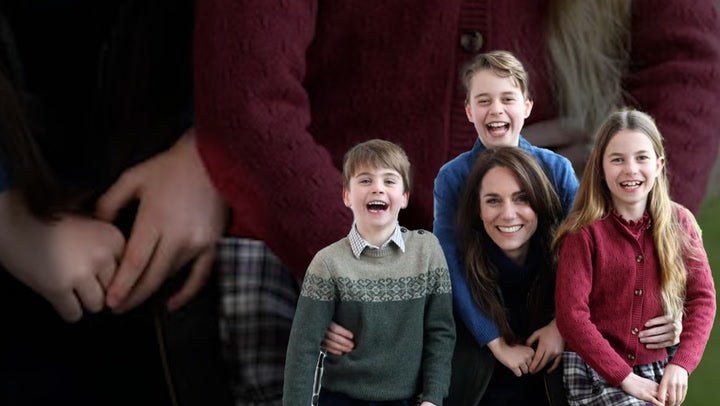What else don’t the royals want us to see?
Editorial: The fallout from a heartwarming snap of the Princess of Wales with her children will have consequences for the monarchy’s handlers and may have done lasting damage to the royal family’s public image

On first reading, the row about the Princess of Wales’s Mothering Sunday photograph appears to be the epitome of royal trivia. According to the explanation that eventually emerged from Kensington Palace, the “manipulation” of the image was no more sinister than the bumbling of an amateur photographer and inexpert user of the Adobe Photoshop software package or the like. In the words of Kate herself: “Like many amateur photographers, I do occasionally experiment with editing...”
Unfortunately for her, as well as for Prince William and their advisers, it also seems that they occasionally like to “experiment” with their comms strategy, too.
In the case of this unfortunate snap – already referred to in tabloid circles as “Kategate” – it has had some calamitous consequences for their public image, and for the trust the public invest in the institution of the monarchy. And that is not a trivial matter. To put it plainly, and despite some spectacular PR failures over the years, the public expect rather more from the royal family than they do from, say, their political leaders, in relation to whom fake news is no shocker.
Members of the royal family are not expected to spin things too far, or to present a false picture of events in any sense of the term. When they do, previous episodes show that the result can be grievous indeed for them – the deceptions around the so-called “war of the Waleses” in the 1990s being a particularly powerful warning from history.
Trust is the issue, then, and an important one. It affects the standing of the institution, and even its functions in a modern democracy. Once questions had been raised about the photograph of Kate and her progeny, and the editing of it had been admitted, some people wondered, reasonably or not, what Kensington Palace has got to hide. If “they” manipulate photographs, what else do they manipulate?
Questions about the photograph persist, despite, or rather because of, the princess’s statement – not least because it is so curt and was so tardy in arriving. Far too many conspiracy theories have sprouted and spread online to be killed off by a single posting on X (formerly Twitter). Why did such a simple, innocent explanation take so long to produce? What made it so important to achieve perfection in what was supposed to be an informal, joyous portrait, admittedly of a not-so-typical family?
Why was it judged so essential to move Princess Charlotte’s hand so that it was disconnected from her arm? What might be the connection with the Princess’s recent surgery and recuperation? Why was she not wearing her wedding ring? Is there more to this than meets the eye?
If the alterations to the picture were so minor, why did the photo agencies decide to “kill” the picture? Further clarifications are required.
The Princess of Wales certainly looked well and fully recovered in the image, so far as it was indeed a contemporaneous representation of her, and the quickest way to resolve all of these issues would be for Kensington Palace to arrange for the broadcasters to capture a few sequences, say, of Kate with her family, walking around the garden.
A little earlier than planned, such a photo op would reassure those concerned for her wellbeing, and confound those who spread spurious gossip, by proving that the original press releases at the beginning of the year were accurate – she’s been undergoing medical treatment and is now recovering well. It might end the confusion, at least to the extent that anything can ever end the wild speculation that thrives on social media. At the very least, the original “raw” photograph should be released.
Kensington Palace is clear that the Princess of Wales did not want to cause offence, and that her only aim was to show her family at its best. However, it is now clear that she did not understand the difference between a family snap and a public image.
British royalty has troubles enough without such self-inflicted injuries to their standing and to the perception of their commonality with the people. A combination of illness, the disgrace of Prince Andrew, the exile of the Sussexes, and the public desire, shared by the King, for a slimmer version of “The Firm”, has led to a sudden crisis of understaffing, and to continuing low-level tensions.
This has not helped things to settle down after the death of the Queen. There remains great public goodwill towards the institution, and little appetite for the United Kingdom to become a republic, but as Elizabeth II pointedly and shrewdly observed in 1997, a hereditary monarchy can only exist with the “support and consent of the people”. This should never be taken for granted.






Join our commenting forum
Join thought-provoking conversations, follow other Independent readers and see their replies
Comments